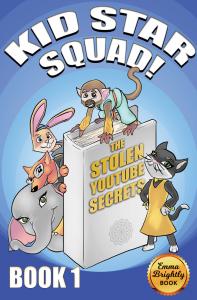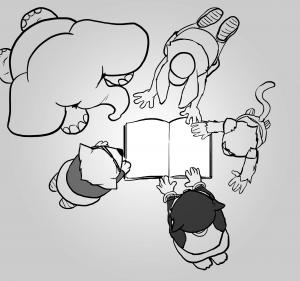Can a gender-balanced children’s book be popular? — Yes, this question sadly still has to be asked in 2021
One new author's quest to contribute diversity into popular books for kids.
SAN DIEGO, CA, USA, December 29, 2020 /EINPresswire.com/ -- Growing up in the 1980s and 1990s, new author Emma Brightly was an avid reader and good student. She wondered why almost every book she was given, both fiction and nonfiction, had white males in the starring roles.
“I guess women and people of color haven’t done enough to be worth writing about,” was the only conclusion her young mind could come up with. She felt heart-broken.
A study by Florida State University confirms that Brightly’s experience was not an anomaly. The gender-bias and overrepresentation of white characters in 20th-century children’s books is nothing short of shocking.
The study of over 6,000 books published from 1900 to 2000 found that:
• Males are central characters in 57 percent of children's books published per year, while only 31 percent have female central characters.
• No more than 33 percent of children's books published in any given year contain central characters that are adult women or female animals, but adult men and male animals appear in up to 100 percent of books.
• Male animals are central characters in more than 23 percent of books per year, while female animals are in only 7.5 percent.
• On average, 36.5 percent of books in each year studied include a male in the title, compared to 17.5 percent that include a female.
• Although books published in the 1990s came close to parity for human characters, a significant disparity of nearly 2 to 1 remains for male animal characters versus female.
"The widespread pattern of underrepresentation of females that we find supports the belief that female characters are less important and interesting than male characters," said Janice McCabe, the lead sociologist for the study.
Flash forward to 2019. The Guardian looked at the most popular picture books published in 2018 and found that the books, “collectively present a white and male-dominated world to children, feature very few BAME (black, Asian, and minority ethnic) characters and have become more biased against girls in the past year.”
Now as 2020 comes to a close and 2021 begins, one wonders if gender-balanced children’s books with strong female and BAME lead characters can make their way to the bestsellers lists.
“Kids need books that reflect the true brilliant diversity of the world they live in and paint an inspiring picture that they can be great leaders and problem-solvers no matter their skin color or gender,” says Brightly who is working on her first series of books for kids ages 7 to 11 years old.
Brightly's Kid Star Squad series centers around five main characters, three of whom are female and two of whom are male. Each character has a familial origin from a different part of the world — Northern Africa, Southern Africa, South America, North America, and East Asia.
Brightly hopes that the Kid Star Squad series and other books with diverse and interesting characters (by diverse authors) will rise to the top of kids’ must-read lists. Book 1 of the series is currently free to all readers on Amazon.
“I hope that my children will never come to the same devastating conclusion that I did,” adds Brightly who is currently compiling a list of children's books with diverse characters from diverse authors to share with teachers, parents, and libraries.
To add a book to the list, please reach out.
Emma Brightly
Atlanticus Books
email us here
Legal Disclaimer:
EIN Presswire provides this news content "as is" without warranty of any kind. We do not accept any responsibility or liability for the accuracy, content, images, videos, licenses, completeness, legality, or reliability of the information contained in this article. If you have any complaints or copyright issues related to this article, kindly contact the author above.


